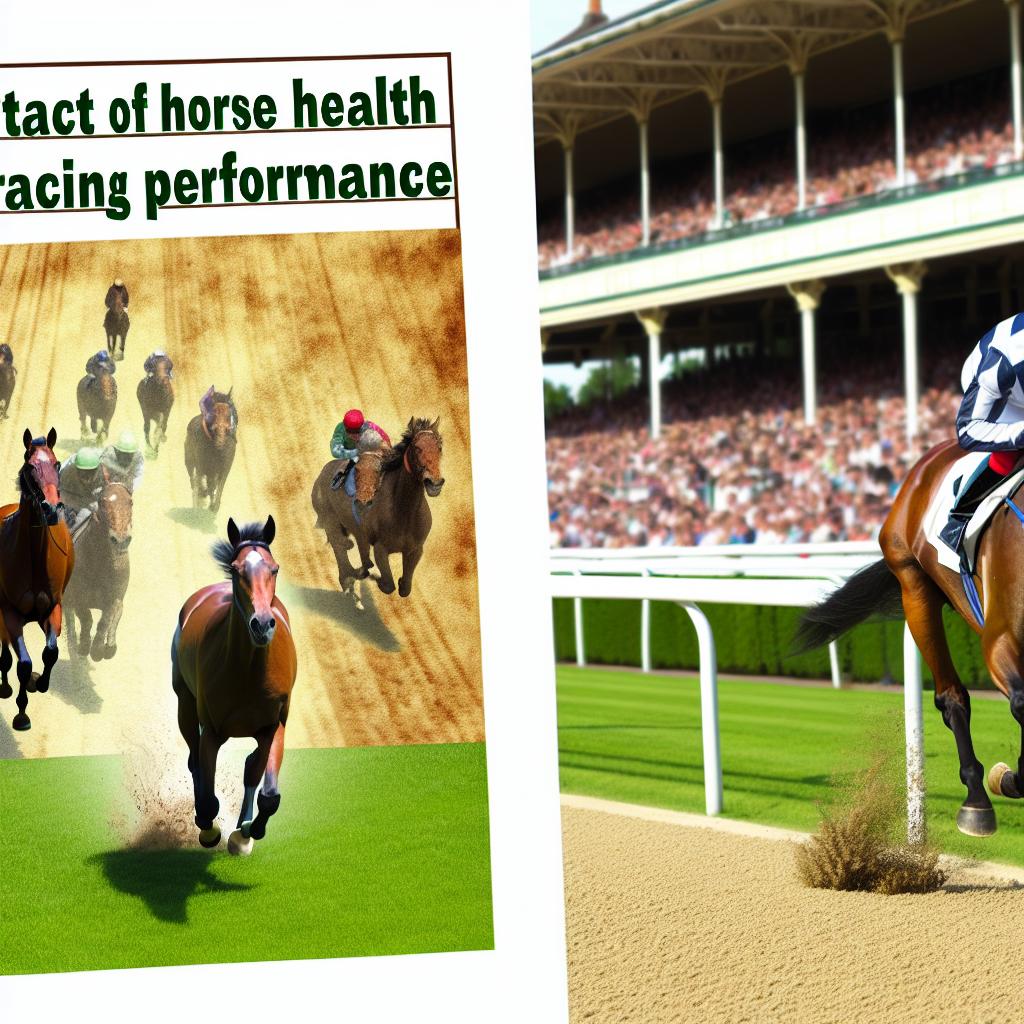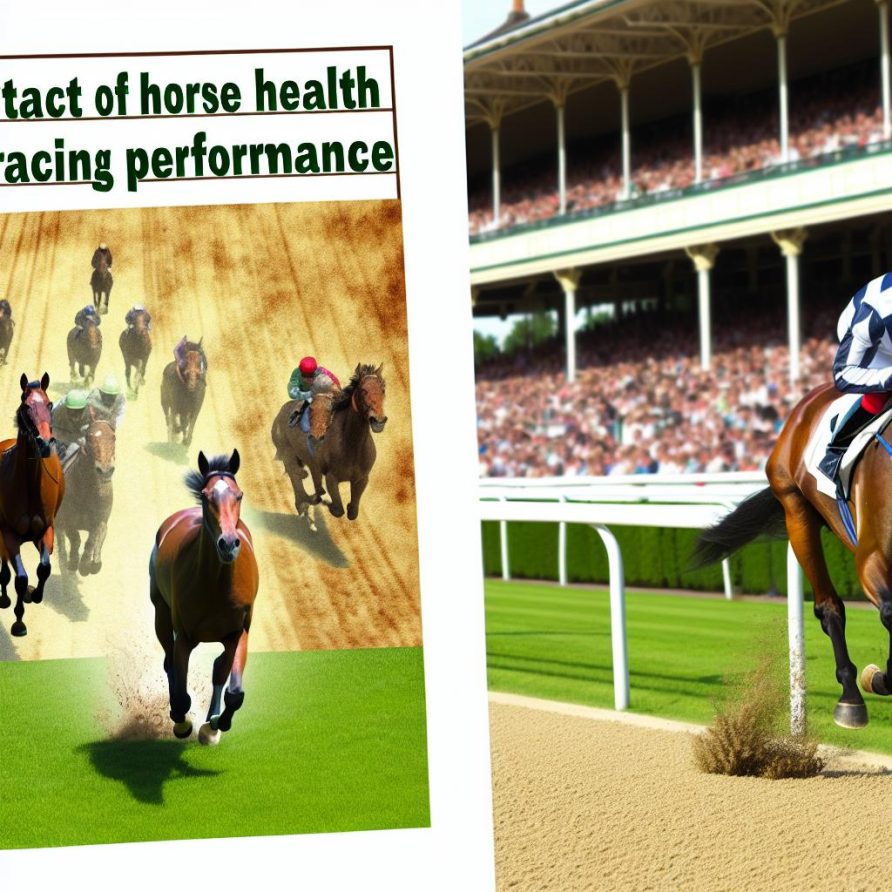Understanding Horse Health in Race Performance
The health of a racehorse is a critical factor that directly influences its performance on the track. It encompasses several dimensions, each playing a vital role in ensuring that a horse can race at its best while maintaining its health and well-being. Maintaining optimal health not only contributes to peak physical performance but also ensures the longevity and welfare of the horse. This article explores the key elements of horse health that impact racing success and delve deeper into the intricacies of keeping racehorses fit for the demanding sport of horse racing.
Physical Health and Conditioning
The cornerstone of a racehorse’s health is its physical conditioning. Unlike other horse breeds, racehorses are bred and trained for speed, agility, and endurance. Adequate muscle development, cardiovascular fitness, and joint health are essential for enabling them to compete at high speeds. Rigorous conditioning programs, tailored specifically for each racehorse, aim to build and sustain strength and endurance—crucial components for competing in races that can range from short sprints to longer endurance events.
Proper nutrition aligns directly with the physical conditioning regimen. A nutritious diet rich in essential vitamins, minerals, and proteins is necessary to sustain the rigorous demands of training sessions that racehorses undergo. For a racehorse to maintain peak fitness, it is imperative that the diet is well-balanced in a manner that supports intense physical exertion while also aiding recovery. An optimal balance between energy intake and expenditure ensures that a horse is neither underweight, which could lead to weakness and fatigue, nor overweight, which could strain the horse’s joints and cardiovascular system.
Veterinary Care and Disease Prevention
Routine veterinary care is instrumental in monitoring and sustaining the health of racehorses. Regular veterinary check-ups constitute a preventative strategy that plays a pivotal role in the early identification and management of diseases that could hinder performance. For instance, vaccinations and routine health screenings help avert common ailments such as colic, laminitis, and respiratory infections—conditions that are notoriously disruptive to a horse’s training and racing schedule.
The health of racehorses is closely monitored through frequent evaluations, including blood tests and imaging diagnostics. These evaluations help identify issues that might otherwise go unnoticed, allowing for timely interventions. Modern diagnostic tools, such as ultrasound and digital radiography, provide detailed insights into a horse’s internal health, facilitating preemptive action before potential health issues develop into formidable challenges.
Impact of Injuries
Injuries are a notable concern within the racing industry, given the physical demands placed on racehorses. Common injuries include tendon and ligament strains, fractures, and hoof problems. These injuries can have immediate ramifications on performance, rendering a horse temporarily out of competition, and also have long-term implications on a horse’s racing career.
Effective management of injuries involves a multifaceted approach, combining rest and rehabilitation with, in some cases, surgical intervention. The primary objective is to rehabilitate the horse to a state of peak performance without compromising its long-term health. Post-injury care involves carefully monitored physical therapy and a gradual return to training to ensure that the horse recovers fully and safely.
Psychological Well-being
The psychological health of horses is another significant, albeit often overlooked, aspect that influences race performance. Horses, like humans, can experience stress and anxiety, and these mental states can negatively affect their concentration and behavior during races. A calm and focused horse is more likely to perform effectively under the high-pressure conditions typical of horse racing.
Creating a stable environment is essential to support a horse’s psychological well-being. This includes providing consistent training routines and sufficient turnout time to allow horses to exhibit natural behaviors and reduce stress levels. Handlers and trainers have a critical role in fostering a sense of security and trust in the horse, employing familiarization techniques and trust-building exercises that help reinforce positive mental states.
The Role of Technology and Research
Technological advancements and ongoing research have greatly expanded the understanding and management of equine health. Innovations such as wearable technology for monitoring physiological data—such as heart rate, temperature, and activity levels—have revolutionized how trainers and veterinarians track and optimize horses’ fitness and health. These technologies enable real-time monitoring and data gathering, providing invaluable insights into the horse’s condition and allowing for immediate adjustments to its training program if necessary.
In addition, substantial progress in veterinary medicine, driven by rigorous scientific research, continues to elevate standards in horse care practices. Veterinary research is often published in scientific journals and equine health resources, where researchers share findings related to disease prevention, injury management, nutrition, and other critical aspects of equine health. Interested readers can explore these topics further by accessing specialized equine health publications and industry resources through reputable platforms.
As the understanding of equine health continues to evolve, racehorse trainers, veterinarians, and riders are better equipped to care for these magnificent animals. In turn, these horses have the opportunity to perform at their best, with their well-being remaining at the forefront of racing endeavors. Communicating these findings among the equestrian community is key to fostering an environment where both horse performance and welfare can thrive in harmony.





